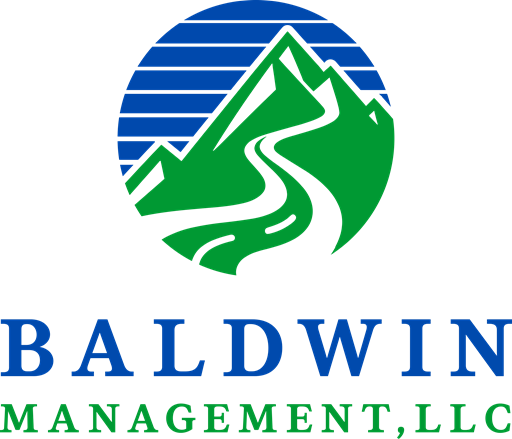Executive Summary: Qualified Charitable Distributions, known as “QCDs” are tax-free donations made from an Individual Retirement Account to a qualified charity. For those with substantial IRA balances and who are charitably inclined, this form of giving can be an effective way to lower one’s tax obligation while accomplishing philanthropic goals. QCDs can be made by individuals who are 70 ½ years old or older in amounts up to $108,000 annually. QCDs first became available in 2006 as part of the Pension Protection Act and have since become a popular way to “do good” while satisfying the IRA owner’s required minimum distribution.
Rules:
- QCDs can be made from a Traditional IRA, Inherited IRA, or SEP IRA. In the case of a SEP IRA (for self-employed individuals) it must be inactive, meaning that you are no longer contributing to it. QCDs cannot be made from workplace 401(k) plans. Roth IRAs are eligible for QCDs, but the tax benefit is eliminated since these accounts contain after-tax dollars.
- In 2025, the minimum age to do a QCD is 70 ½ years old in amounts up to $108,000 per person. For those filing jointly, the available amount is doubled to $216,000.
- QCDs must be reported on your federal income tax return and the donor should collect and keep receipts from each charity acknowledging the gift amount. Recipients must be qualified 501(c)(3) organizations which may exclude some private foundations.
Tax Benefits:
The primary tax benefit of a QCD is to lower the IRA owner’s adjusted gross income. This is particularly effective for retirees over the age of 73 who are required to take annual required minimum distributions (RMDs) from their retirement account. This amount is taxed as ordinary income, and for those with large IRA balances, the dollar amount can be substantial, causing some or all of the additional income to land in a higher marginal tax bracket. Using QCDs to lower one’s adjusted gross income can also be helpful in reducing taxes on Social Security benefits and Medicare premium surcharges known as IRMAA.
Another key tax advantage of the QCD is that the IRS permits the “standard deduction” to be used in addition to the QCD. Let’s consider an example of a retiree, age 75 and single, who would like to give $5,000 to her favorite charity. This year, she is required to withdraw $7,500 from her retirement account by year-end, and rather than writing a $5,000 check from her savings account, she chooses to have the $5,000 donation disbursed directly from her retirement account in the form of a QCD. When she files her tax return, just $2,500 of the $7,500 required withdrawal will be considered taxable income AND she may take the full $15,000 standard deduction afforded to single tax filers. The QCD acted to shelter the $5,000 donation amount from showing up as taxable income since it was redirected to a charity. For simplicity, if we assume her federal income tax rate is 20%, the QCD method saved $1,000 in income taxes (20% of $5,000) and accomplished her goal of helping her favorite charitable organization.
When to Begin using QCDs:
Although QCDs become available when the account owner turns 70 ½, most people will derive the greatest tax benefit from waiting until (RMDs) are required at age 73, with the plan of using the QCD as an offset against this taxable income. When determining what donation amount will maximize the tax benefits, coordinating with your investment advisor and tax preparer is wise. For example, in 2025, the 24% federal tax bracket jumps to 32% for single filers for income between $191,950 and $243,725. A charitably inclined retiree who knows that he or she has other taxable income of $175,000 prior to taking a $25,000 required minimum distribution may choose to give just enough to keep the adjusted gross income number at or under $191,950. This would be done with the knowledge that income above this level would be subject to substantially higher taxation at the 32% rate. So, with some tax planning and careful consideration of all sources of income, the QCD can be used strategically.
Tips:
- If you are considering doing a QCD as part of your charitable giving, avoid taking your required minimum distribution (RMD) early in the year, as a QCD cannot be done retroactively if you have already taken your withdrawal and recognized that income.
- If you plan to give to the same charities annually, consider requesting that each organization’s mailing instructions be kept as standing instructions. This will avoid the need to redo paperwork.
- If you would like to include a personal note along with your donation, you may request that check(s) be sent to your home address rather than directly to the charity. These must be made out to the charity but can be mailed to you.
- Remember that QCDs must be disbursed directly from the custodian of your retirement account assets to you or the charitable organization of your choice.
- Custodians like Charles Schwab & Co., Fidelity, Vanguard, and others are busy with these requests in the final weeks of the year, so don’t procrastinate and submit QCD requests early.
Feel free to contact your Baldwin advisor to discuss whether a QCD is an attractive option for you. Our tax team is also available to assist in tax planning & preparation should that be of interest to you.
Sources
www.IRS.gov
www.nerdwallet.com
www.schwab.com
“Reducing RMDs With QCDs” December 13, 2024 by Hayden Adams
The opinions expressed in this Commentary are those of Baldwin Investment Management, LLC. These views are subject to change at any time based on market and other conditions, and no forecasts can be guaranteed. The reported numbers enclosed are derived from sources believed to be reliable. However, we cannot guarantee their accuracy. Past performance does not guarantee future results. We recommend that you compare our statement with the statement that you receive from your custodian. A list of our Proxy voting procedures is available upon request. A current copy of our ADV Part 2A & Privacy Policy is available upon request or at www.baldwinmgt.com/disclosures.
Jared V. Quereau, Managing Director
Jared Quereau is a Portfolio Manager and Investment Committee member for Baldwin Investment Management. He has 25 years of industry experience and joined Baldwin in 2020. Most recently, Jared held the roles of Portfolio Manager and Technology sector analyst at BB&T Securities, the successor firm of the Stratton Management Company. His prior experience includes Equity Trader at Great Point Capital and Registered Representative at Charles Schwab & Company. Jared earned a B.S. in Finance from the University of Colorado at Boulder and is a member of the CFA Institute and CFA Society of Philadelphia.

